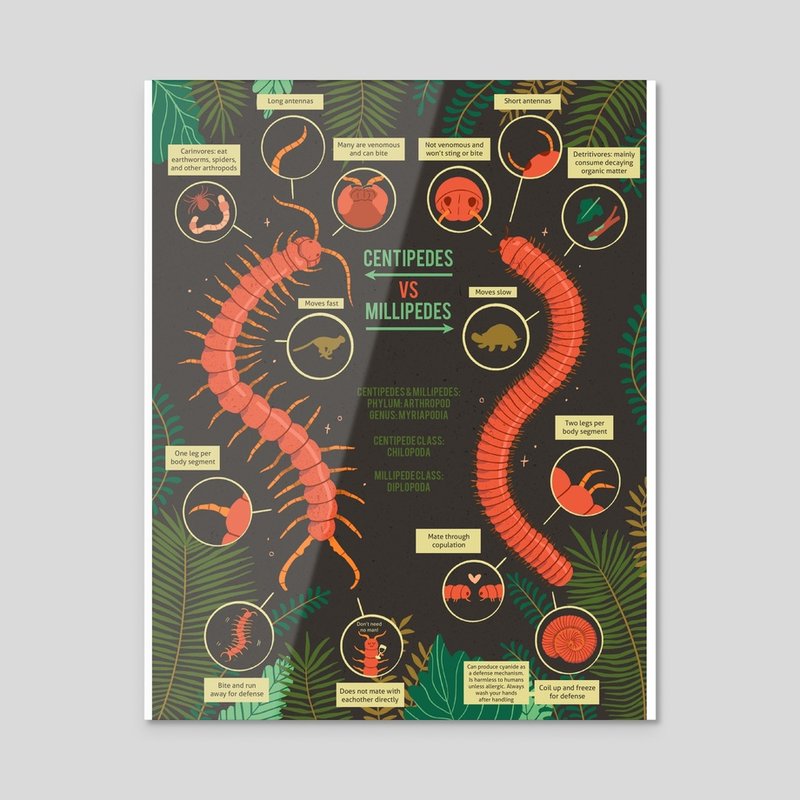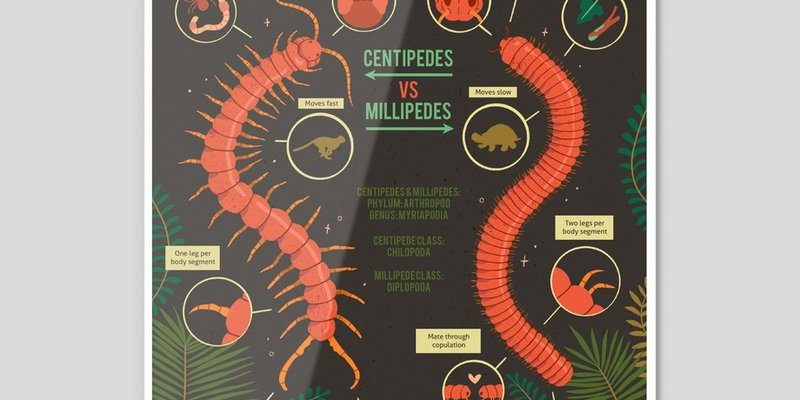
Honestly, comparing velvet worms to centipedes and millipedes is like comparing apples to oranges—both are fruits, but they taste and look completely different! Velvet worms, with their soft bodies and unique hunting methods, present a stark contrast to the more familiar, multi-legged centipedes and millipedes. In this article, we’ll explore their anatomy, behavior, habitats, diets, and much more. You might be surprised at just how different they are, even though they share a common ancestor!
What are Velvet Worms?
Velvet worms, scientifically known as *Onychophora*, are often referred to as “living fossils.” This is because they’ve changed very little over millions of years. These creatures are soft-bodied, with a velvety texture, making them quite distinctive. You might picture them as a cross between a caterpillar and an octopus due to their segmented bodies and multiple pairs of legs.
These little guys typically measure around 5 to 15 centimeters in length and live in moist, humid environments like rainforests. They thrive in leaf litter, where they hunt for food. When they catch their prey, usually small insects, they have a fascinating way of doing it. They use a sticky slime that they shoot out from their mouths, which can trap unsuspecting bugs. It’s almost like they have their very own version of superhero powers!
Here’s the thing: while they may seem cute and harmless, velvet worms are predators. Their method of hunting is both effective and unique, setting them apart from the other critters we’ll talk about later.
Understanding Centipedes
Now, let’s take a look at centipedes. These creatures belong to the class *Chilopoda* and are well-known for their long, segmented bodies. You can easily recognize them by their numerous legs—one pair per body segment. Depending on the species, a centipede can have anywhere from 30 to 354 legs. This abundance of legs gives them incredible speed, allowing them to dart away from threats or swiftly pursue their prey.
Centipedes are primarily nocturnal, meaning they come out at night to hunt. They mostly feed on small insects, spiders, and even other centipedes! With their venomous claws, they can deliver a painful bite if they feel threatened. To be honest, this makes them a bit intimidating compared to our velvet worm friends. Their venom can cause swelling and irritation in humans, but in general, they prefer to keep to themselves.
The habitats centipedes prefer are dark and damp, like under rocks or inside decaying wood. Their need for moisture is essential, as they can easily dry out if exposed to sunlight for too long. Just like velvet worms, centipedes play a crucial role in their ecosystems as predators.
Diving into Millipedes
If centipedes are the speedy hunters, millipedes are the slow and steady team players of the invertebrate world. Belonging to the class *Diplopoda*, millipedes are typically characterized by their rounded bodies and two pairs of legs per body segment. This gives them a much more substantial number of legs—some species can boast over 400!
Unlike centipedes, millipedes are mainly detritivores, which means they feed on decaying plant matter. They play a vital role in the ecosystem by breaking down dead leaves and other organic materials, enriching the soil in the process. You might find them wandering around gardens, under logs, or in leaf litter, munching away at anything they can find.
When threatened, millipedes have a unique defense mechanism: they can secrete a toxic fluid that deters potential predators. While they aren’t dangerous to humans, their secretions can cause irritation if they come into contact with skin. Millipedes are relatively harmless and contribute positively to their environments, unlike their more aggressive relatives.
Comparing their Anatomy
When we look at the anatomy of velvet worms, centipedes, and millipedes, you can see major differences. Velvet worms have a soft, segmented body and many pairs of stubby legs. In contrast, centipedes have a long, slender body covered in hard exoskeleton segments, enabling quick movement. Millipedes, on the other hand, are more rounded and less flexible, making them slower and more cumbersome.
Here’s a quick rundown of their key anatomical features:
- Velvet Worms: Soft-bodied, segmented, multiple pairs of legs, and sticky slime for hunting.
- Centipedes: Long, slender, numerous legs, and venomous claws for capturing prey.
- Millipedes: Rounded body, two pairs of legs per segment, and secretions for defense.
These differences in anatomy aren’t just for show; they directly impact their lifestyles and survival strategies. For example, the quick, agile movements of centipedes make them effective hunters, while the slower millipedes help to recycle nutrients in the environment.
Habitats and Distribution
When it comes to where these creatures are found, they each have unique preferences that influence their survival. Velvet worms are mostly found in tropical and subtropical regions, thriving in moist, dark habitats like leaf litter and rotting wood. Their need for humidity is critical; without it, they risk drying out.
Centipedes have a broader distribution, found across the globe except in extremely cold environments. They prefer dark, damp places, often hiding under rocks, inside decaying wood, or within soil rich in organic material. Their adaptability to various environments makes them one of the more common terrestrial arthropods.
Millipedes are also widely distributed but share habitat preferences with centipedes. Often found in forests, gardens, and fields, they thrive in moist soil where they can feed on decomposing plant matter. Their role as decomposers highlights their importance in our ecosystems as they help recycle nutrients back into the soil.
Diet and Feeding Habits
Diet plays a significant role in how each of these creatures fits into their environments. As mentioned, velvet worms are predators. They actively hunt and capture their prey using their slime, which can immobilize insects. Their diet primarily consists of small bugs, making them effective hunters despite their relatively slow movements.
Centipedes are also carnivorous, using their venomous claws to capture prey. They tend to hunt insects and spiders, showcasing a more aggressive feeding style. Their ability to deliver a painful bite ensures they can tackle a variety of meals.
Contrastingly, millipedes are detritivores, meaning they feast on decaying plant material, rotting leaves, and decaying wood. They play a vital role in nutrient cycling in the ecosystem and seldom pose a threat to other creatures. By breaking down organic material, they enrich the soil and help new plants grow.
Summary: Unique Creatures with Distinct Roles
In the grand scheme of things, velvet worms, centipedes, and millipedes are all vital players in their ecosystems. Each has its unique place, whether it’s the velvet worm’s methodical hunting, the centipede’s speed and aggression, or the millipede’s gentle recycling of nutrients.
Understanding the differences—like their anatomy, habitats, and diets—can make you appreciate the diversity of life all around us. The next time you’re out for a walk in nature or just thinking about these creatures, remember that each one has its story and purpose.
Whether you’re a curious beginner or an avid nature lover, exploring the world of invertebrates opens up a whole new realm of fascination. So, keep your eyes peeled—you never know what you might find hiding beneath the leaves!

